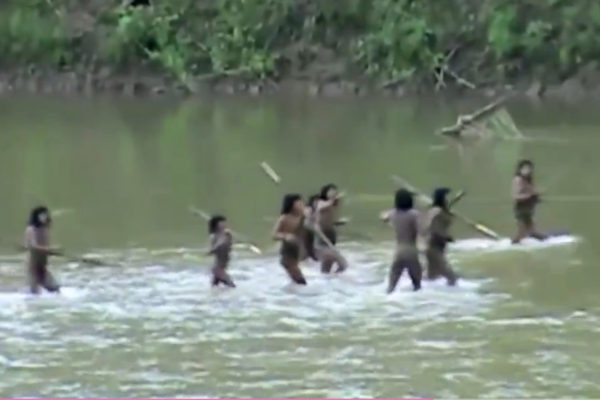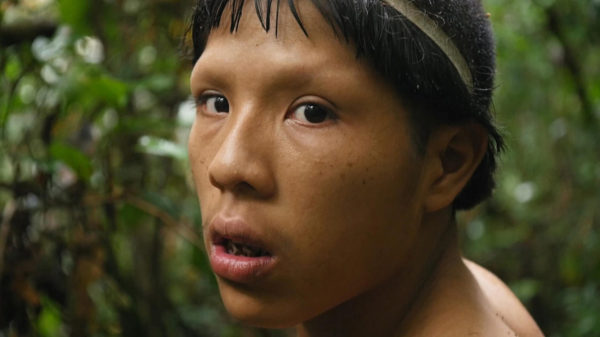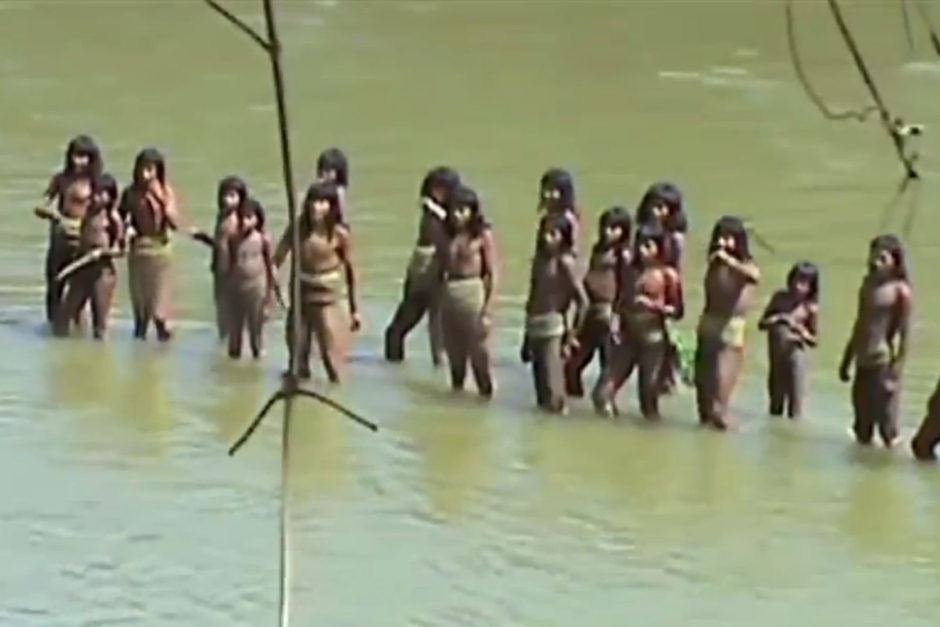Deep in the vast Amazon rainforest are Indians living primitive lives in complete isolation. Totally untouched by modernity, they resemble our Stone Age ancestors. According to experts, several thousand such Indians belonging to a multitude of tribes have yet to make contact with the outside world.
Once in a blue moon, explorers report sightings of tribes that have never been seen before. Two years ago, Jose Carlos Meirelles, a seasoned Brazilian anthropologist, spotted four naked tribesmen on a river bank in an extremely remote corner of Brazil, near the Peruvian border.
The rare encounter was witnessed by Angus MacQueen, a British documentary filmmaker whose fascinating film, First Contact: Lost Tribe of the Amazon, is now available on the Netflix network.

A few months after this incident, 35 more Indians — men, women and children from the same tribe — emerged from the depths of the jungle. They now live in a special reserve under the protection of a Brazilian government agency.
The question one might ask is why they made themselves known in the first place?
According to their spokesman, Xina, “bad men” invaded their encampment and launched a reign of terror. “They killed us for fun,” he says.

In all probability, the aggressors were illegal loggers or drug traffickers. But this was not the first time whites had disrupted and upended their lives. Roughly a century ago, rubber companies enslaved and murdered tens of thousands of indigenous people. As a result, they learned to fear white men and fled even deeper into the forest. Today, however, their fear is eroding.
As they recount their stories in vivid and salty language, they paint a picture of a cruel and unforgiving habitat where they had lived. Hunger sometimes stalked them and poisonous snakes and jaguars kept them on high alert.
They measured the passage of time by the sun and the moon, but could not count beyond ten.
By Meirelles’ reckoning, the first contact between whites and Indians is always fraught with danger. He describes it as an “intricate dance of understanding and misunderstanding” that can lead to tragic outcomes. In the past few years, he notes, about 100 whites have been killed in tense encounters. In one encounter, he himself was struck by an arrow that pierced his neck.
Judging by the Indians MacQueen filmed, they have adapted to their new environment surprisingly well. So much so that they refuse to be seen in public without clothes.
It’s really a remarkable transformation and MacQueen has documented it in granular detail.
